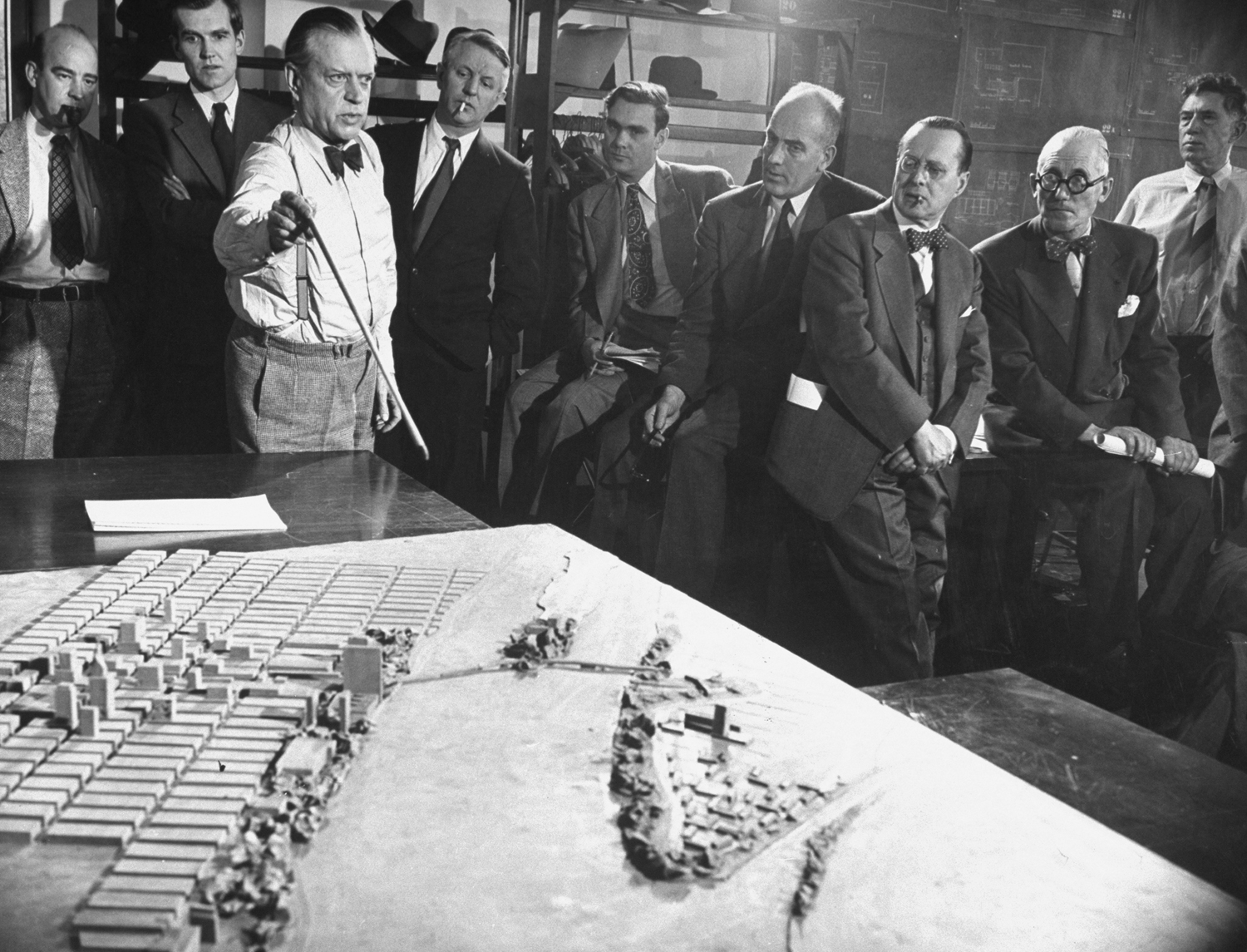
In the troubled wake of World War II, people around the globe came together to form the United Nations (UN), an international body tasked with maintaining peace and security.
The UN wanted to distance itself from the memory of the dramatic failures of its predecessor, the League of Nations. Toward this end, the organization chose a location for its headquarters in America, far away from the fraught politics and toxic modern history of Europe. But it wanted to make an aesthetic statement, as well, by creating headquarters radically different from the League’s palatial facilities in Geneva.
The UN selected a group of architects and engineers — at once renowned and avant-garde — from all over the world to collaborate, in the spirit of post-war unity, on the design. LIFE photographer Frank Scherschel captured this image of the team at work. In it Le Corbusier, in his trademark oval-framed glasses, sits with Raul Fontaina, Vladimir Bodiansky, Robert Kenney and others as Ernest Cormier, one of Canada’s premier architects, discusses the headquarters. In the middle of the group sits Wallace K. Harrison, the beleaguered American architect charged with organizing and managing all of the competing interests of the international design team.
In the end, the design of the UN headquarters achieved at least one aim, in that it was radically new. Adapting its style to its Manhattan home, the complex included a 39-story skyscraper — sheathed in aluminum, glass and Vermont marble — overlooking the East River and perched atop a vast, sweeping General Assembly hall. But like the organization it houses, the headquarters’ design is ultimately as notable for its compromises and half-fulfilled visions as for its rare, undiluted successes.

More Must-Reads from TIME
- Donald Trump Is TIME's 2024 Person of the Year
- Why We Chose Trump as Person of the Year
- Is Intermittent Fasting Good or Bad for You?
- The 100 Must-Read Books of 2024
- The 20 Best Christmas TV Episodes
- Column: If Optimism Feels Ridiculous Now, Try Hope
- The Future of Climate Action Is Trade Policy
- Merle Bombardieri Is Helping People Make the Baby Decision
Contact us at letters@time.com